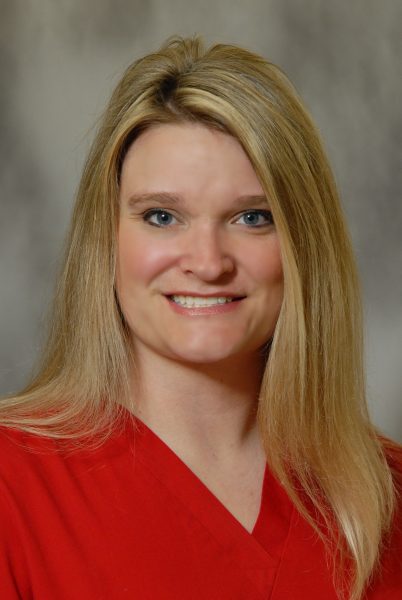
“The Birth to Three Conference for Early Interventionists was outstanding. I learned so much and learned strategies about positioning, neurodivergence, and techniques that can be used as soon as the next day in everyday practices. I would strongly recommend this course for anyone working with the Birth to Three population!”
Wow! Our inaugural Birth to Three Conference wrapped up last week and it’s safe to say this conference hit it out of the park for our community of B-3 therapists! To say it was eventful would be an understatement…we were met with a Nor’easter, power outages and an east coast earthquake. However, despite mother nature’s uncooperative weather, it was smooth sailing as the show went on with over 500 therapists tuning in for the big event. It was a wildly successful two days of learning.
With 14 different topics presented that spanned across the birth to three field, therapists had a variety of content to choose from when selecting their sessions and earning CEUs. Our passionate speakers delivered inspiring presentations for therapists to bring back to their patients and families. A huge thank you to our 14 Facility Partners who worked with us to help spread the word and promote the inaugural event.
A Truly Meaningful Conference
After years of research and team planning, ERI Co-founder and President Carol Loria, MS, PT, saw her dream of a Birth to Three conference come to fruition. “This conference is on the forefront of lots of new ideas, paradigm shifts and treatment tools that will enhance the lives of the birth to three population…this is truly meaningful,” said Loria. The conference sought to cover topic areas that were relevant to OTs, PTs, SLPs and other special educators working with this young population. With an emphasis on therapy interventions, assessment and treatment strategies, this conference gave therapists the tools needed to develop their skill sets and start applying them to their patients the next day.
Having a virtual conference allowed therapists from all across the country (42 states to be exact!), as well as 5 Canadian territories, to attend and connect during the big event. The Whova app used during the conference allowed for the social engagement to flow. Participants and speakers could connect, discuss and share information in real-time, and staff were always on-hand to answer questions. The Whova conference page will remain accessible through mid-July.

Day One Highlights

The Thursday morning keynote sessions kicked-off with seasoned OT, Kelly Mahler, presenting on the science of Interoception. Therapists learned ways to implement strategies that will foster a child’s inner connection. Many participants commented on how they wanted to continue to learn more about the emerging and fascinating topic.
“Kelly’s presentation gave me a lot of food for thought in the way I structure sessions with patients, as well as the way I parent. Thank you!”
 ERI faculty member Suzanne Davis Bombria, PT and Melissa Smith, CCC-SLP, followed up the second keynote session with the topic of Handling for Postural Control. The multi-disciplinary duo provided numerous detailed demonstrations of postural handling using a soft bodied doll, and participants loved seeing how the hands-on videos applied to the PT, OT and SLP therapist.
ERI faculty member Suzanne Davis Bombria, PT and Melissa Smith, CCC-SLP, followed up the second keynote session with the topic of Handling for Postural Control. The multi-disciplinary duo provided numerous detailed demonstrations of postural handling using a soft bodied doll, and participants loved seeing how the hands-on videos applied to the PT, OT and SLP therapist.
This comment was a common theme for their presentation: “Loved the case studies provided! Very informative and learned a lot of new information and strategies to apply during my sessions.”
Some of the breakout sessions included information on Adaptive Equipment for Children, Impact of Trauma, and Providing “Just Right Care” for the Medically Complex Infant and Toddler. We also heard from speaker Mary Billings, MS, CCC, on the topic of Oral Structure and Functional Development as she discussed the oral functional development that takes place through the first 3 years of life.
 “Mary was an excellent presenter! She was incredibly knowledgeable and shared so much great information and examples that all of us can bring back to our own practice…I’m leaving this course feeling full of knowledge, ideas, and hope. Thank you, Mary!”
“Mary was an excellent presenter! She was incredibly knowledgeable and shared so much great information and examples that all of us can bring back to our own practice…I’m leaving this course feeling full of knowledge, ideas, and hope. Thank you, Mary!”
Day Two Wrap Up
With the first day under our belts, it was important to begin Day Two with a relaxed and clear head. Enter yoga guru, Anne Buckley-Reen, OTR, to start things off with a calming yoga session and get us ready for another full day of learning.
 Friday’s sessions started off with ERI faculty Trisha Thorne, PT, Anais Villaluna, SLP, and Dana Kizer, OT, delivering a keynote on the topic of Torticollis treatments through the lens of multidisciplinary management and collaboration. These intervention strategies can be applied to improve postural alignment and motor and feeding skills.
Friday’s sessions started off with ERI faculty Trisha Thorne, PT, Anais Villaluna, SLP, and Dana Kizer, OT, delivering a keynote on the topic of Torticollis treatments through the lens of multidisciplinary management and collaboration. These intervention strategies can be applied to improve postural alignment and motor and feeding skills.
“I appreciated the multidisciplinary perspective on treating the child with torticollis. The assessments reviewed and strategies provided were helpful. I had noticed that about half of the children in our program continued to have residual feeding and sensory issues after their torticollis was “resolved” and this provided good insights as to why some of these issues persist beyond infancy to toddlerhood and beyond. I found the workshop very helpful and informative.”
As a formally late-identified autistic SLP, our second keynote speaker Julie Roberts delivered an impactful presentation on the Neurodiversity Movement. The presentation equipped therapists with strategies and resources, but also shone a light on Julie’s personal views and experiences which were incredibly insightful.
 “Julie was beyond eloquent and able to speak of such rich and intense information in laymen’s terms! My mind was blown…my practice is profoundly impacted.”
“Julie was beyond eloquent and able to speak of such rich and intense information in laymen’s terms! My mind was blown…my practice is profoundly impacted.”
We loved being able to highlight ERI faculty members Bertie Gatlin, PT and Janine Wiskind, OTR/L during the afternoon breakout sessions, on the topics of Neonatal Abstinence Syndrome and Primitive Reflexes, respectively. The Power Of Healthy Airways & Sleep presented by Nicole Archambault, CCC-SLP and a session on Apraxia delivered by Danielle Carey, CCC-SLP were both well attended and well received.
Save the Date – April 3 and 4, 2025
As we wrap up on this inaugural event, we’ve already starting planning for next year’s virtual conference. We encourage our B-3 therapists to continue to provide us with feedback on how we can best meet their educational needs, and we look forward to continuing to serve this population of therapists so that they may provide the best possible care for these young patients and families.
As a final reflection of last week, many of us have walked away with a feeling of gratitude. Grateful to our inspiring speakers, our dedicated therapist participants, our facility partners, and of course the entire ERI team and ambassadors for their tireless efforts behind the scenes to help make this first year’s conference a huge success. A big THANK YOU to all and we can’t wait to do it again for next year’s 2nd Annual Birth to Three Conference on April 3 and 4, 2025!

 We Love This Time of Year!
We Love This Time of Year!

 Holly Schifsky, OTR/L, CNT, NTMTC, CBIS
Holly Schifsky, OTR/L, CNT, NTMTC, CBIS



 Our distinguished team of ERI faculty who specialize in NICU education are passionate about sharing their expertise. We’re hoping you’ll have the opportunity to meet and greet with neonatal expert
Our distinguished team of ERI faculty who specialize in NICU education are passionate about sharing their expertise. We’re hoping you’ll have the opportunity to meet and greet with neonatal expert 
 As we finalize the finishing touches for this year’s inaugural
As we finalize the finishing touches for this year’s inaugural  The ERI Award Committee is thrilled to announce Camila Gonzalez as the winner for our New to B-3 Scholarship award! This award is intended to celebrate and support an emerging leader who is new to practicing in a Birth to 3 setting. It is never easy to begin working in a new area and we really admire those who persevere and provide exceptional care despite the hurdles they may face during those first few years.
The ERI Award Committee is thrilled to announce Camila Gonzalez as the winner for our New to B-3 Scholarship award! This award is intended to celebrate and support an emerging leader who is new to practicing in a Birth to 3 setting. It is never easy to begin working in a new area and we really admire those who persevere and provide exceptional care despite the hurdles they may face during those first few years.  The B-3 Master Clinician Scholarship Award for 2024 is proudly presented to Dr. Breanna Adkins! Dr. Adkins was nominated for this honor by one of her colleagues, who emphasized how impactful Dr. Adkins’ work is with her young clients and families, her OT students and the broader therapy community.
The B-3 Master Clinician Scholarship Award for 2024 is proudly presented to Dr. Breanna Adkins! Dr. Adkins was nominated for this honor by one of her colleagues, who emphasized how impactful Dr. Adkins’ work is with her young clients and families, her OT students and the broader therapy community.